Discover 35 hidden attractions, cool sights, and unusual things to do in Halifax (Canada). Don't miss out on these must-see attractions: Halifax Public Gardens, Halifax Town Clock, and Maritime Museum of the Atlantic. Also, be sure to include Naval Museum of Halifax in your itinerary.
Below, you can find the list of the most amazing places you should visit in Halifax (Nova Scotia).
Table of Contents
Halifax Public Gardens
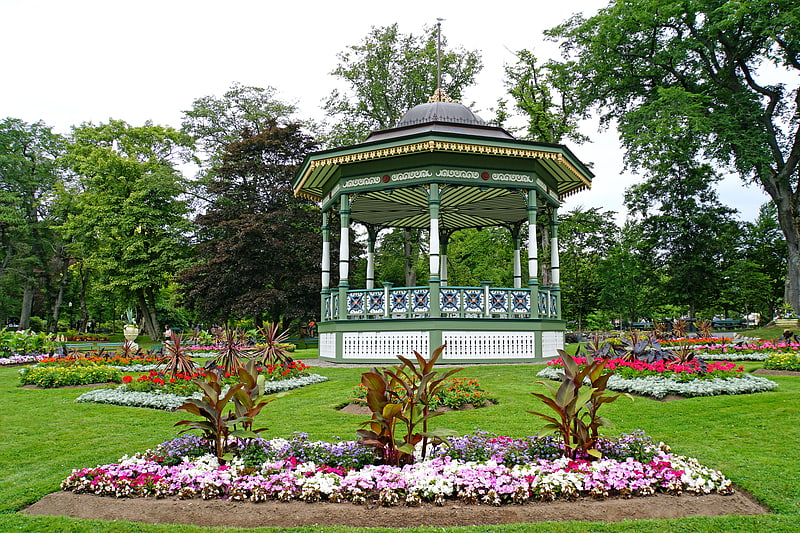
Garden in Halifax, Nova Scotia. The Halifax Public Gardens are Victorian era public gardens formally established in 1867, the year of Canadian Confederation. The gardens are located in the Halifax Regional Municipality, Nova Scotia on the Halifax Peninsula near the popular shopping district of Spring Garden Road and opposite Victoria Park. The gardens were designated a National Historic Site of Canada in 1984.[1]
Address: Spring Garden Road and South Park St, B3T 2M3 Halifax (South End)
Halifax Town Clock

The Town Clock, also sometimes called the Old Town Clock or Citadel Clock Tower, is one of the most recognizable landmarks in the historic urban core of Halifax, Nova Scotia.[2]
Address: Brunswick Street, B3J 3L2 Halifax (South End)
Maritime Museum of the Atlantic
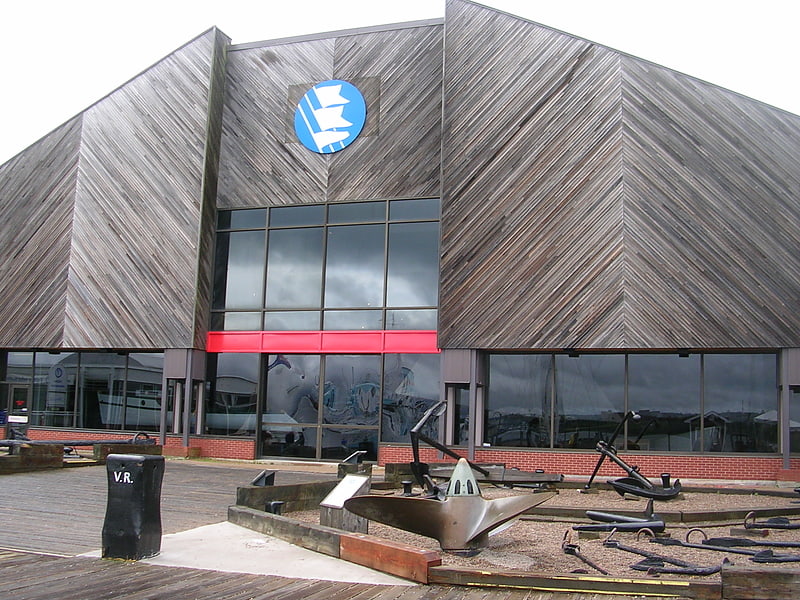
Museum in Halifax, Nova Scotia. The Maritime Museum of the Atlantic is a maritime museum located in downtown Halifax, Nova Scotia, Canada.
The museum is a member institution of the Nova Scotia Museum and is the oldest and largest maritime museum in Canada with a collection of over 30,000 artifacts including 70 small craft and a steamship: the CSS Acadia, a 180-foot steam-powered hydrographic survey ship launched in 1913.[3]
Address: 1675 Lower Water St, B3J 1S3 Halifax (South End)
Naval Museum of Halifax
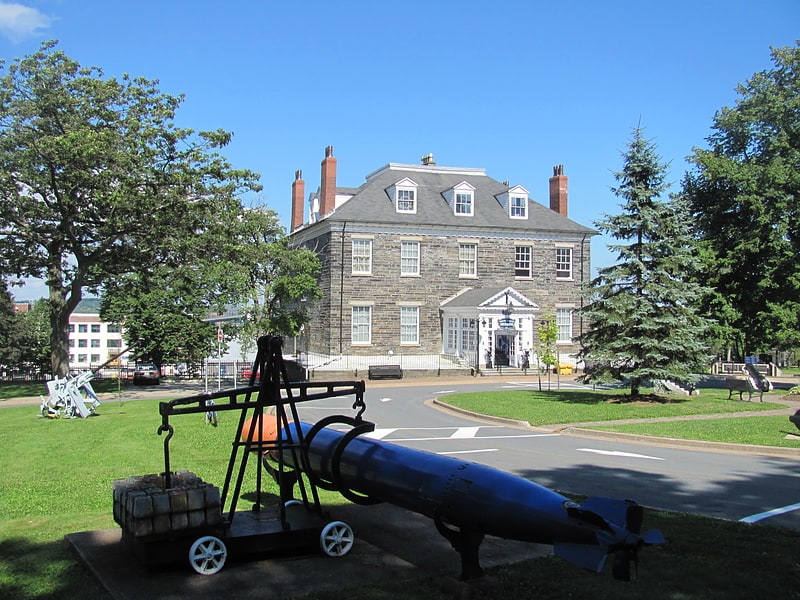
Museum. The Naval Museum of Halifax is a Canadian Forces museum located at CFB Halifax in the former official residence of the Commander-in-Chief of the North America Station. Also known as the "Admiralty House", the residence is a National Historic Site of Canada located in Halifax, Nova Scotia, Canada. The museum collects, preserves and displays the artifacts and history of the Royal Canadian Navy.[4]
Address: 2725 Gottingen Street, B3K 3C9 Halifax (North End)
St. Paul's Church

Anglican church in Halifax, Nova Scotia. St. Paul's Church is an evangelical Anglican church in downtown Halifax, Nova Scotia, within the Diocese of Nova Scotia and Prince Edward Island of the Anglican Church of Canada. It is located at the south end of the Grand Parade, an open square in downtown Halifax with Halifax City Hall at the northern end.
The church is modelled after Marybone Chapel in Westminster, London, which was designed by controversial architect James Gibbs, the architect of St Martin-in-the-Fields at Trafalgar Square.
Built during Father Le Loutre's War, it is the oldest surviving Protestant church in Canada and the oldest building in Halifax. There is also a crypt below the church. Close to the church is the St. Paul's Church Cemetery. The official chapel of the church was the Little Dutch (Deutsch) Church.
Saint Paul's was designated a National Historic Site of Canada in 1981. In 1981, it was designated a Municipal Registered Heritage Property by the former City of Halifax, and in 1983 it was designated a Provincially Registered Heritage Property both under the provincial Heritage Property Act.[5]
Address: 1749 Argyle St, B3J 3K4 Halifax (South End)
Nova Scotia Museum
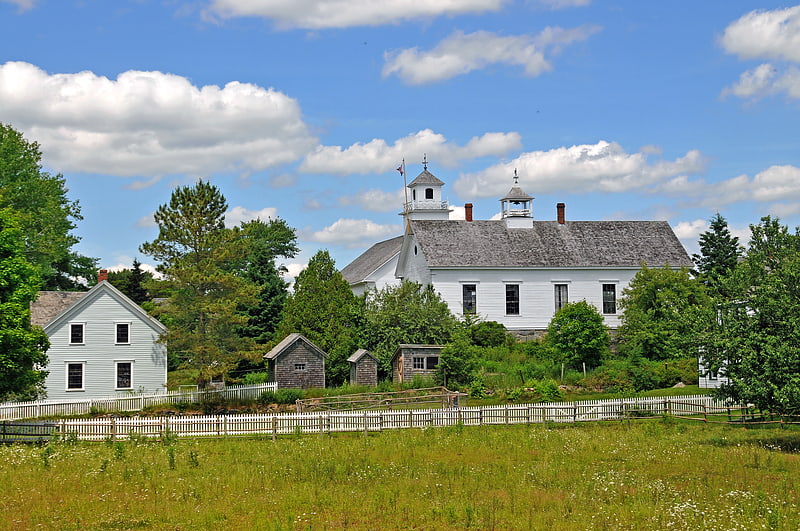
Museum. Nova Scotia Museum is the corporate name for the 28 museums across Nova Scotia, Canada, and is part of the province's tourism infrastructure. The organization manages more than 200 historic buildings, living history sites, vessels, and specialized museums and about one million artifacts and specimens, either directly or through a system of co-operative agreements with societies and local boards. The NSM delivers programs, exhibits and products which provide both local residents and tourists in Nova Scotian communities an opportunity to experience and learn about Nova Scotia's social and natural history. More than 600,000 people visit the facilities each year.[6]
Address: 1747 Summer Street, Halifax (South End)
Point Pleasant Park
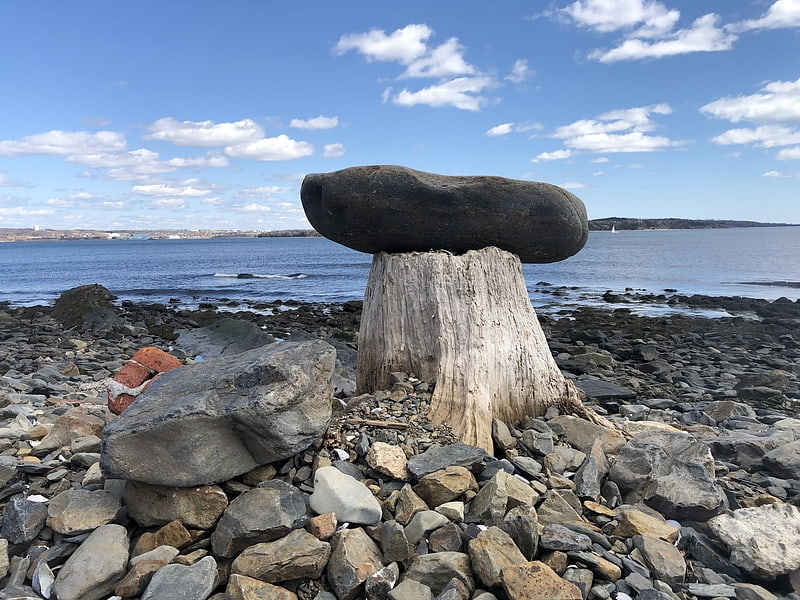
Park in Halifax, Nova Scotia. Point Pleasant Park is a large, mainly forested municipal park at the southern tip of the Halifax peninsula. It once hosted several artillery batteries, and still contains the Prince of Wales Tower - the oldest Martello tower in North America. The park is a popular recreational spot for Haligonians, as it hosts forest walks and affords views across the harbour and out toward the Atlantic.
Plays are performed in the park every summer by a professional theatre company called Shakespeare by the Sea. The performances take place at Cambridge Battery, and include both Shakespearean productions and original musicals based on classic fairy tales for audiences of all ages. The company also operates the 80-seat Park Place Theatre in the lower parking lot of the park, which is used as a rain venue during the summer, and for fall/winter indoor productions.
Point Pleasant Park is owned by the British government under the administration of the Minister of the Department of Canadian Heritage and is leased to Halifax Regional Municipality for a ceremonial 1 shilling per year. The original lease for the land was negotiated by Sir William Young in 1866.[7]
Address: 5718 Point Pleasant Dr., B3H 1B5 Halifax (South End)
Old Burying Ground

Cemetery in Halifax, Nova Scotia. The Old Burying Ground is a historic cemetery in Halifax, Nova Scotia, Canada. It is located at the intersection of Barrington Street and Spring Garden Road in Downtown Halifax.[8]
Address: Corner of Spring Garden and Barrington, Halifax (South End)
Pier 21
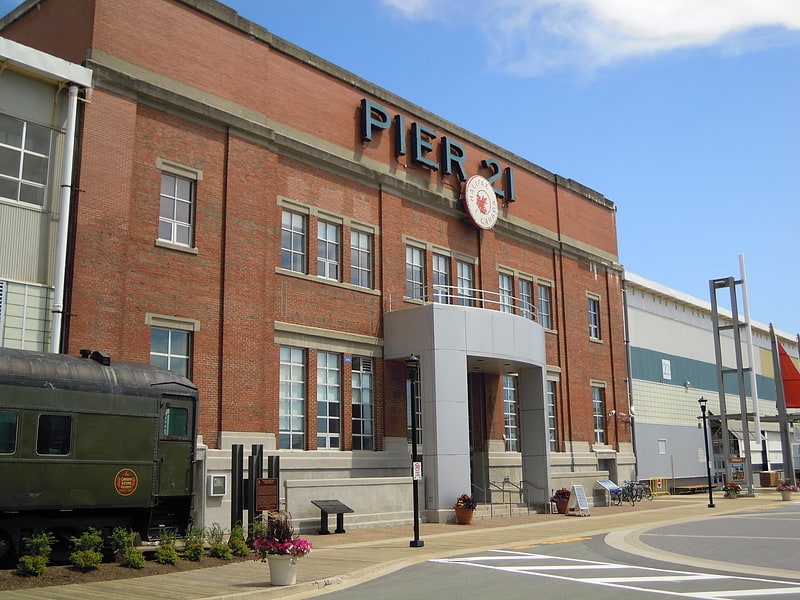
Museum in Halifax Regional Municipality, Nova Scotia. Pier 21 was an ocean liner terminal and immigration shed from 1928 to 1971 in Halifax, Nova Scotia, Canada. Nearly one million immigrants came to Canada through Pier 21, and it is the last surviving seaport immigration facility in Canada. The facility is often compared to the landmark American immigration gateway Ellis Island. The former immigration facility is now occupied by the Canadian Museum of Immigration, the Nova Scotia College of Art and Design as well as various retail and studio tenants.[9]
Address: 1055 Marginal Road, Halifax (South End)
Emera Oval
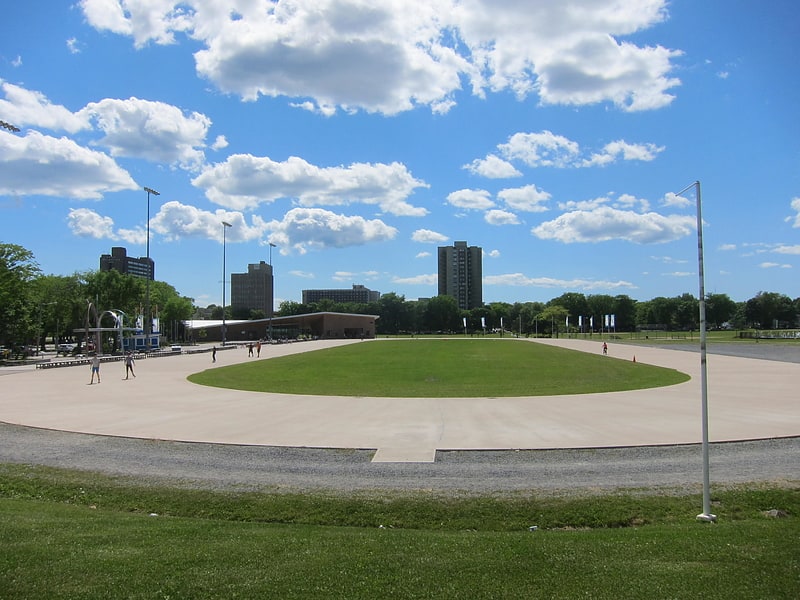
Event venue in Halifax, Nova Scotia. The Emera Oval, originally known as the Canada Games Oval, is a permanent skating rink/speed skating rink installed in Halifax, Nova Scotia, on the Halifax Commons for the 2011 Canada Games. It is the size of three NHL hockey rinks.[10]
Address: North Park Stree, Halifax North Common, Halifax (North End)
HMCS Sackville
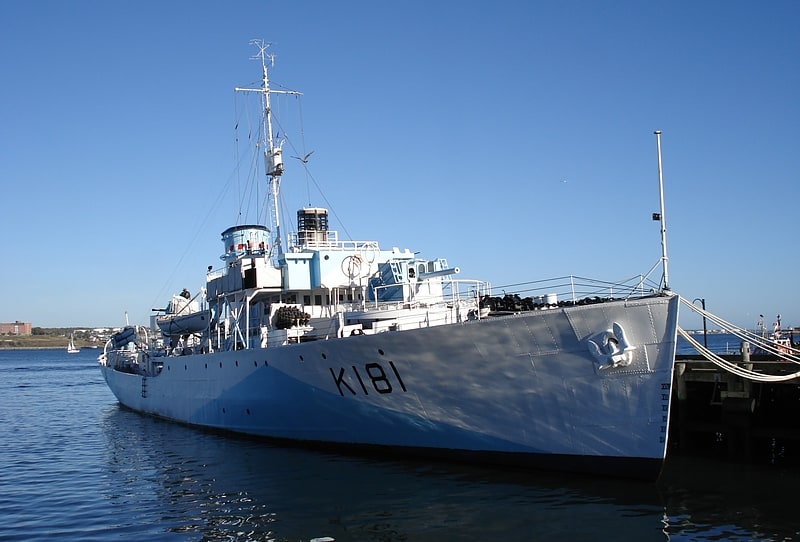
Flower-class corvette. HMCS Sackville is a Flower-class corvette that served in the Royal Canadian Navy and later served as a civilian research vessel. She is now a museum ship located in Halifax, Nova Scotia, and the last surviving Flower-class corvette.[11]
Address: 1675 Lower Water St adjacent the Maritime Museum of the Atlantic, B3K 5X5 Halifax
Province House
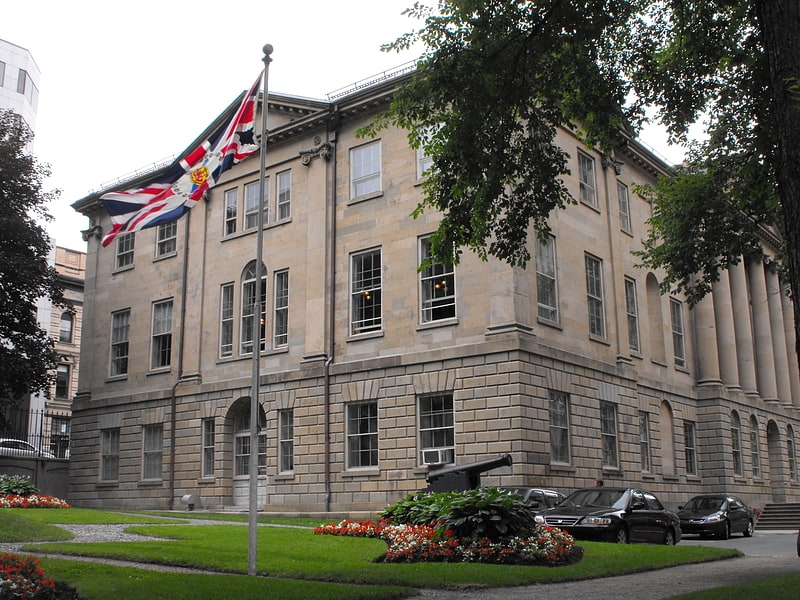
Building. Province House in Halifax is where the Nova Scotia legislative assembly, known officially as the Nova Scotia House of Assembly, has met every year since 1819, making it the longest serving legislative building in Canada. The building is Canada's oldest house of government. Standing three storeys tall, the structure is considered one of the finest examples of Palladian architecture in North America.[12]
Address: 1726 Hollis Street, B3J 2Y3 Halifax (South End)
Grand Parade
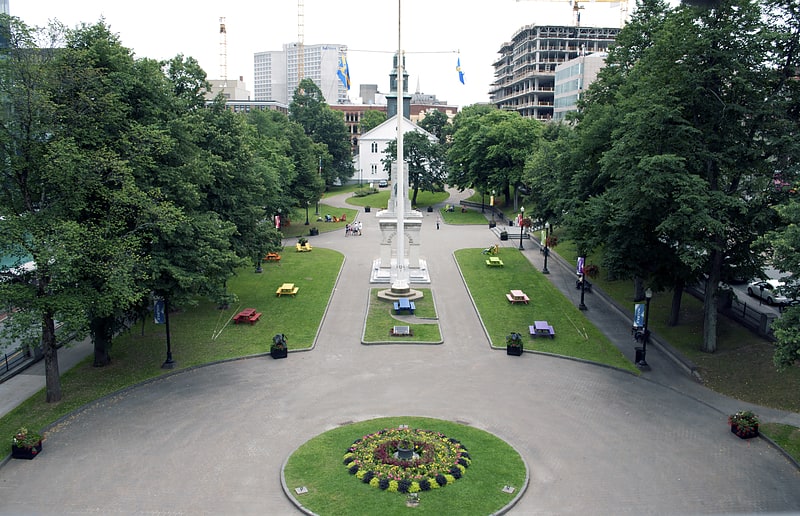
Historical landmark in Halifax, Nova Scotia. The Grand Parade is an historic military parade square dating from the founding of Halifax in 1749. At the north end of the Grand Parade is the Halifax City Hall, the seat of municipal government in Nova Scotia's Halifax Regional Municipality. At the south end is St. Paul's Church. In the middle of Grand Parade is the cenotaph built originally to commemorate the soldiers who served in World War I.
Centrally located in Downtown Halifax, the square remains an important civic space used for numerous events including musical performances, political demonstrations, the annual New Year's Eve celebrations, Remembrance Day ceremonies, and Christmas tree lighting.[13]
Halifax Forum
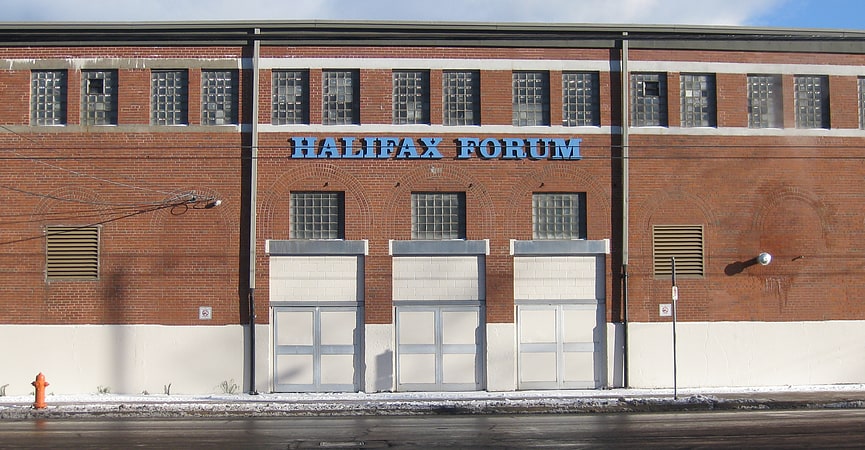
Arena in Halifax, Nova Scotia. The Halifax Forum is an arena and multi-purpose facility in Halifax, Nova Scotia. Its uses include sporting events, bingo, ice skating, concerts and markets. It was built in 1927 on the site of the former Nova Scotia Provincial Exhibition which was badly damaged by the Halifax explosion in 1917. It opened on 26 December 1927 and incorporated the first artificial ice surface east of Montreal. It is the second biggest arena in Nova Scotia, and the fifth biggest in Atlantic Canada. The building was added to the Canadian Register of Historic Places in 2003.[14]
Address: 2901 Windsor St, B3K 5E5 Halifax (North End)
Africville
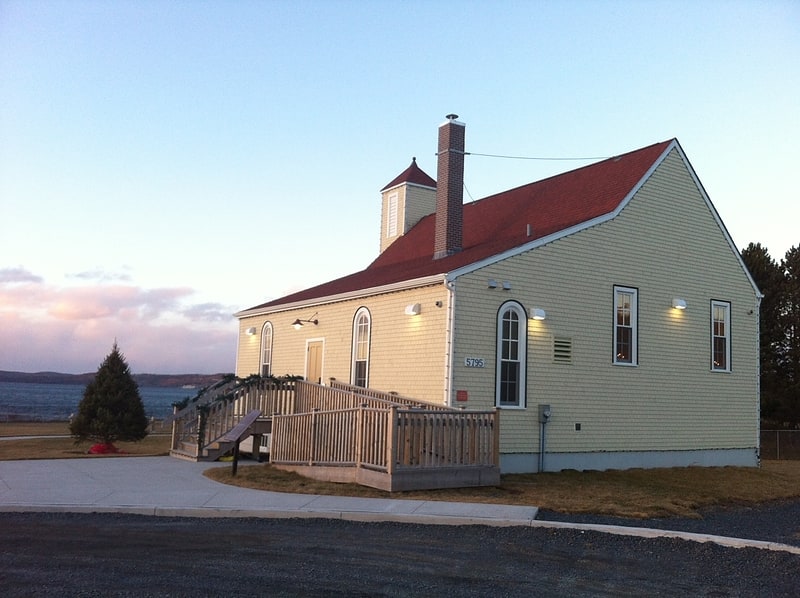
Africville was a small community of predominantly Black Canadians located in Halifax, Nova Scotia, Canada. It developed on the southern shore of Bedford Basin and existed from the early 1800s to the 1960s. From 1970 to the present, a protest has occupied space on the grounds. The government has recognized it as a commemorative site and established a museum here. The community has become an important symbol of killing identity, as an example of the "urban renewal" trend of the 1960s that razed similarly racialized neighbourhoods across Canada, and the struggle against racism.
Africville was founded by Black Nova Scotians from a variety of origins. Many of the first settlers were formerly enslaved African Americans from the Thirteen Colonies, Black Loyalists who were freed by the Crown during the American Revolutionary War and War of 1812. (Black people settled in Africville along Albemarle Street, where they had a school established in 1785 that served the Black community for decades under Rev. Charles Inglis.) Other residents arrived later, in association with Black people being recruited from the American South for jobs in mining at Glace Bay.
During the 20th century, Halifax neglected the community, failing to provide basic infrastructure and services such as roads, water, and sewerage. The city continued to use the area as an industrial site, notably introducing a waste-treatment facility nearby in 1958. The residents of Africville struggled with poverty and poor health conditions as a result, and the community's buildings became badly deteriorated. During the late 1960s, the City of Halifax condemned the area, relocating its residents to newer housing in order to develop the nearby A. Murray MacKay Bridge, related highway construction, and the Port of Halifax facilities at Fairview Cove to the west. Soon after this, former residents and activists began a long protest on the site against their treatment and the condemnation.
In 1996 the site was designated as a National Historic Site of Canada as being representative of Black Canadian settlements in the province and as an enduring symbol of the need for vigilance in defence of their communities and institutions. After years of protest and investigations, in 2010 the Halifax Council ratified a proposed "Africville Apology", under an arrangement with the federal government, to compensate descendants and their families who had been evicted from the area. In addition, an Africville Heritage Trust was established to design a museum and build a replica of the community church.[15]
Sir Sandford Fleming Park
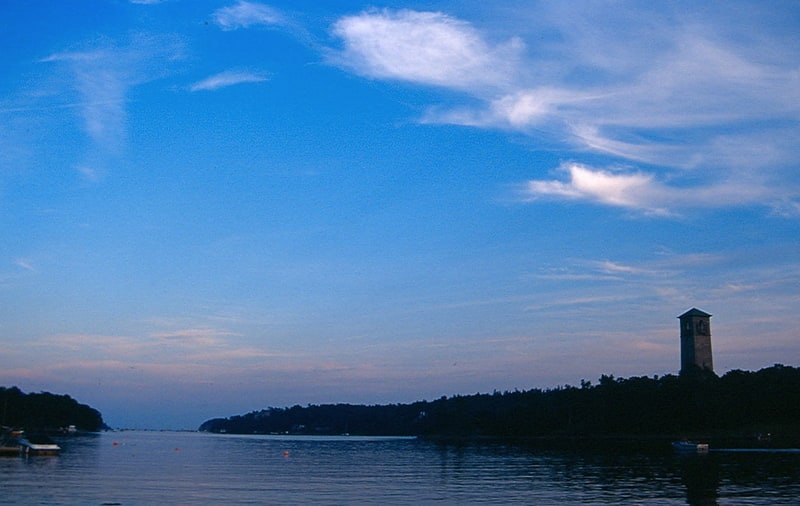
Park in Halifax, Nova Scotia. Sir Sandford Fleming Park is a 95-acre Canadian urban park located in the community of Jollimore in Halifax Regional Municipality. It is also known as Dingle Park, named after the town of Dingle in southwestern Ireland. The park was donated to the people of Halifax by Sir Sandford Fleming. The centrepiece of the park is an impressive tower that commemorates Nova Scotia's achievement of representative government in 1758. Constructed between 1908 and 1912, the Memorial Tower was erected during the same period of building other commemorative towers in the British Commonwealth, notably Cabot Tower in Bristol, England and Cabot Tower in St. John's.[16]
Seaport Farmers' Market

Shopping, Farmer's market, Food and drink, Market
Address: 1209 Marginal Rd, B3H 4P8 Halifax (South End)
Camp Hill Cemetery

Cemetery in Halifax, Nova Scotia. Camp Hill Cemetery is a cemetery within Halifax, Nova Scotia, Canada. It is located on Camp Hill, adjacent to Robie Street.[17]
Address: 1600 Summer Street, Halifax (South End)
Little Dutch Church
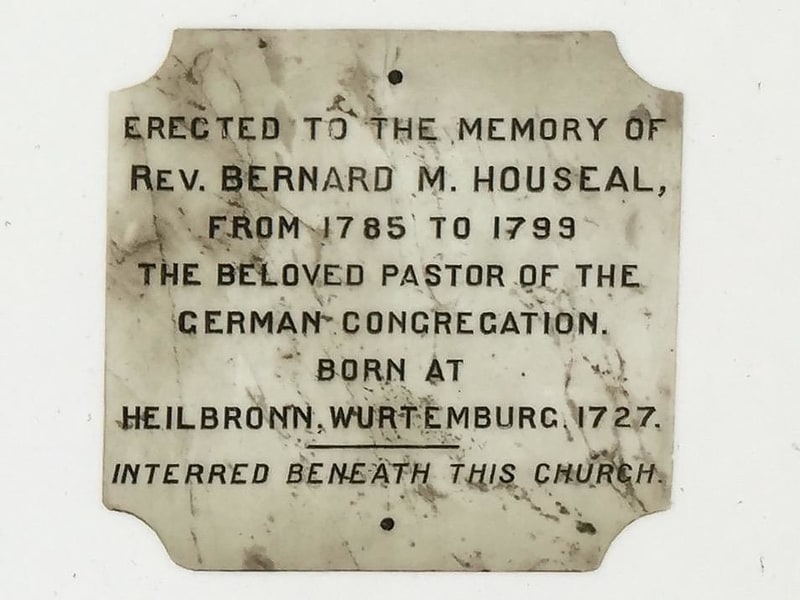
Anglican church in Halifax, Nova Scotia. The Little Dutch Church is the second-oldest building in Halifax, Nova Scotia, Canada, after St. Paul's Church. It was built for the Foreign Protestants, and is the oldest site in Canada associated with Lutheranism. It is a National Historic Site of Canada.[18]
Address: 2393 Brunswick St, Halifax (North End)
York Redoubt
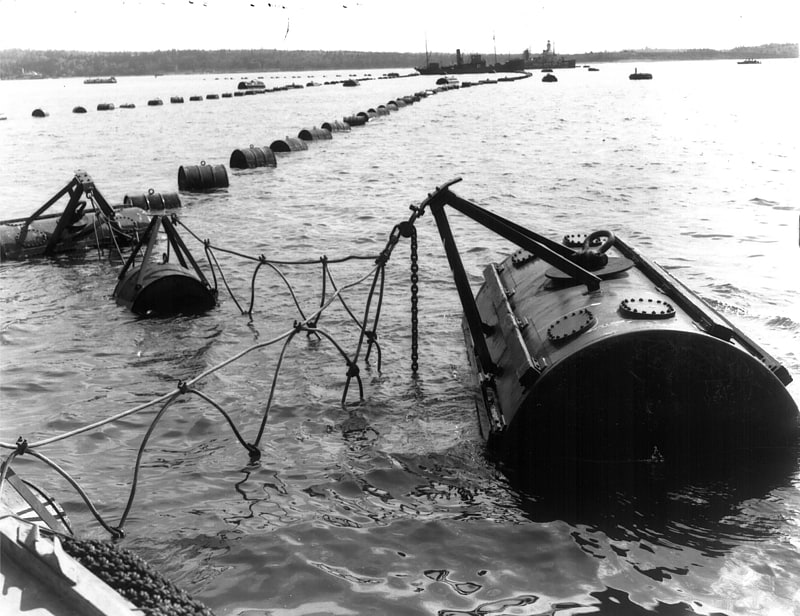
Historical landmark in Ferguson's Cove, Nova Scotia. York Redoubt is a redoubt situated on a bluff overlooking the entrance to Halifax Harbour at Ferguson's Cove, Nova Scotia, Canada, originally constructed in 1793. It was designated a National Historic Site of Canada in 1962.[19]
Scotiabank Centre

Sports facility in Halifax, Nova Scotia. Scotiabank Centre is the largest multi-purpose facility in Atlantic Canada, located in the heart of downtown Halifax, Nova Scotia, Canada. The main entrances to the building are located on Brunswick Street, at the corner of Duke Street and Carmichael Street, at the foot of Citadel Hill. The building's box office entrance is located on Carmichael Street.[20]
Address: Halifax, 1800 Argyle Street
Halifax City Hall
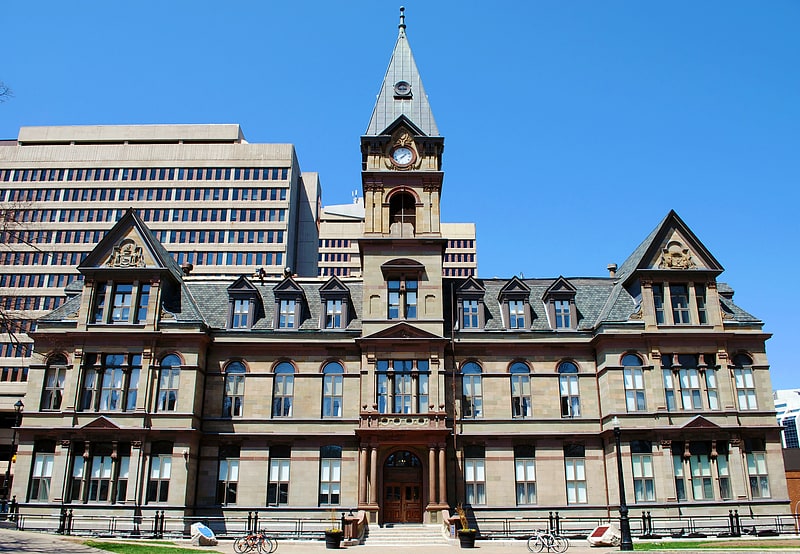
Building in Halifax, Nova Scotia. Halifax City Hall is the home of municipal government in Halifax, Nova Scotia, Canada. Designed by architect Edward Elliot, and constructed for the City of Halifax between 1887 and 1890, it is one of the oldest and largest public buildings in Nova Scotia. The property was designated a National Historic Site of Canada in 1997.
Halifax City Hall was opened for municipal business, and for public access, in 1890 replacing offices in the old court house on the Halifax waterfront. City Hall was chosen to become the seat of the newly created Halifax Regional Municipality in 1996 and is now the base for the Halifax Regional Council.[21]
Address: 1841 Argyle St, B3J 3Y8 Halifax (South End)
Shaar Shalom Synagogue
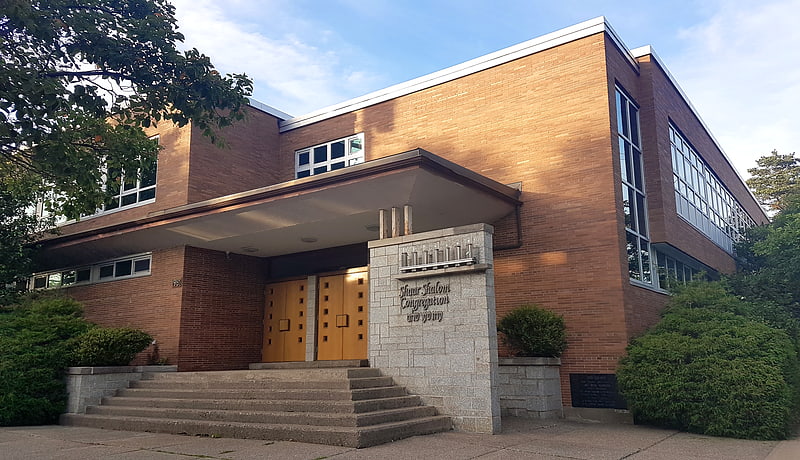
Synagogue in Halifax, Nova Scotia. The Shaar Shalom Synagogue in Halifax, Nova Scotia, is a Conservative Jewish synagogue. The Shaar Shalom Synagogue was among the first Canadian Conservative synagogues to hire women in clergy positions and welcome same-sex partners as members.[22]
Address: 1981 Oxford Street, Halifax
Art Gallery of Nova Scotia

Large museum featuring regional artworks. The Art Gallery of Nova Scotia is a public provincial art museum based in Halifax, Nova Scotia, Canada. The art museum's primary building complex is located in downtown Halifax and takes up approximately 6,200 square metres of space. The museum complex comprises the former Dominion building and two floors of the adjacent Provincial building.
The museum was established in 1908 as the Nova Scotia Museum of Fine Arts and was renamed the Art Gallery of Nova Scotia in 1975. The museum moved into the Dominion building in 1988 and expanded the museum complex in 1998. From 2006 to 2020, the museum operated a satellite branch in Yarmouth.
The museum's permanent collection has over 18,000 works by Nova Scotian, Canadian, and international artists. Its collection is exhibited in its main location in Halifax as well as its satellite branch in Yarmouth. In addition to exhibiting works from its permanent collection, the museum has also organized and hosted a number of travelling arts exhibitions.[23]
Address: 1741 Hollis St, B3J 1V9 Halifax (South End)
Canadian Museum of Immigration at Pier 21

Museum in Halifax, Nova Scotia. The Canadian Museum of Immigration at Pier 21, in Halifax, Nova Scotia, is Canada's national museum of immigration. The museum occupies part of Pier 21, the former ocean liner terminal and immigration shed from 1928 to 1971. Pier 21 is Canada's last remaining ocean immigration shed. The facility is often compared to Ellis Island, in terms of its importance to mid-20th-century immigration to Canada an association it shares with 19th century immigration history at Grosse Isle, Quebec and Partridge Island in Saint John, New Brunswick. The Museum began as an independent institution run by the Pier 21 Society in 1999. It became a national museum run by the Canadian federal government in 2011.[24]
Address: 1055 Marginal Rd, B3H 4P7 Halifax (South End)
St. Mary's Basilica
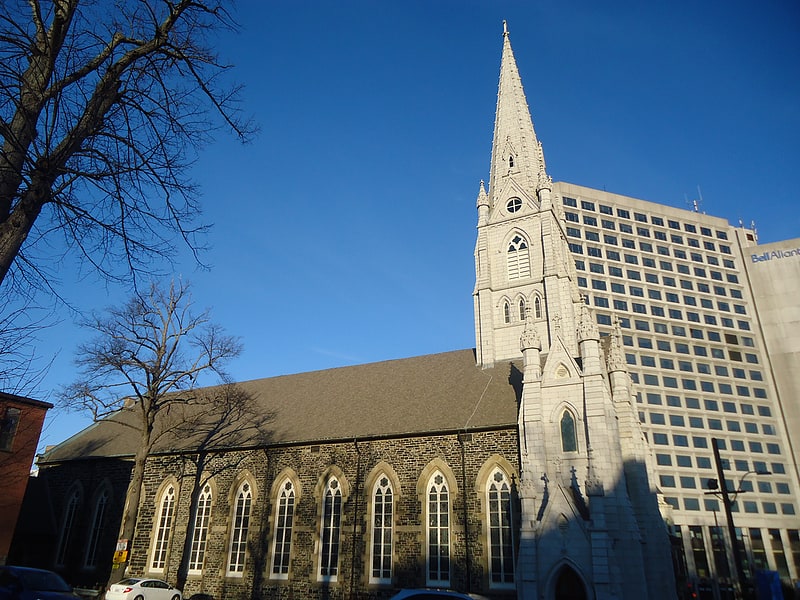
Cathedral in Halifax, Nova Scotia. St. Mary's Cathedral Basilica is a Gothic Revival Catholic cathedral located in the downtown core of Halifax, Nova Scotia, Canada. It is the cathedral church of the Archdiocese of Halifax and is the largest Catholic church in the Archdiocese. Consecrated on October 19, 1899, it was made a basilica in 1950 by Pope Pius XII. The St. Mary's Cathedral Basilica boasts the tallest granite spire in North America.[25]
Address: 1508 Barrington St, B3J 1Z3 Halifax (South End)
Fairview Lawn Cemetery

Cemetery in Halifax, Nova Scotia. Fairview Cemetery is a cemetery in Halifax, Nova Scotia, Canada. It is perhaps best known as the final resting place for over one hundred victims of the sinking of the Titanic. Officially known as Fairview Lawn Cemetery, the non-denominational cemetery is run by the Parks Department of the Halifax Regional Municipality.[26]
Address: Windsor Street, Halifax
St. Patrick's Church
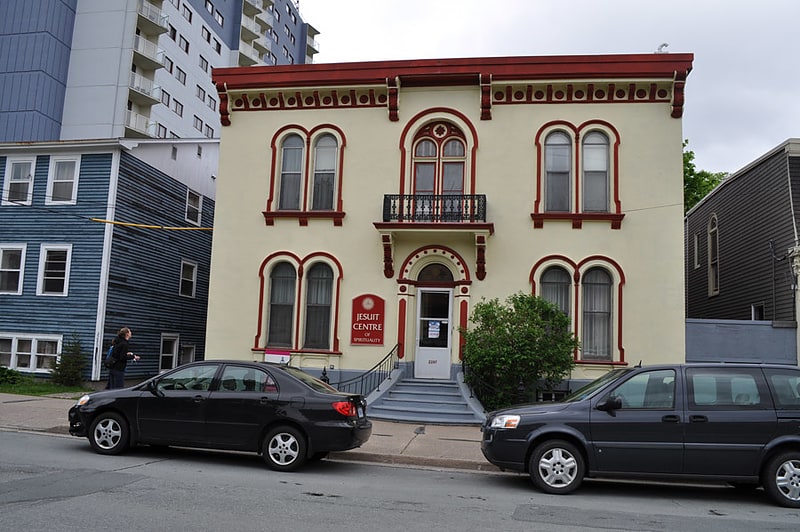
Catholic church in Halifax, Nova Scotia. St. Patrick's Church is a Roman Catholic parish church in Halifax, Nova Scotia. The parish was founded in 1843 and the present church was opened in 1885. It is registered as a Provincial Heritage Building and is currently served by the Society of Jesus.[27]
Address: 2267 Brunswick St, B3K 2Y9 Halifax (North End)
Prince of Wales Tower
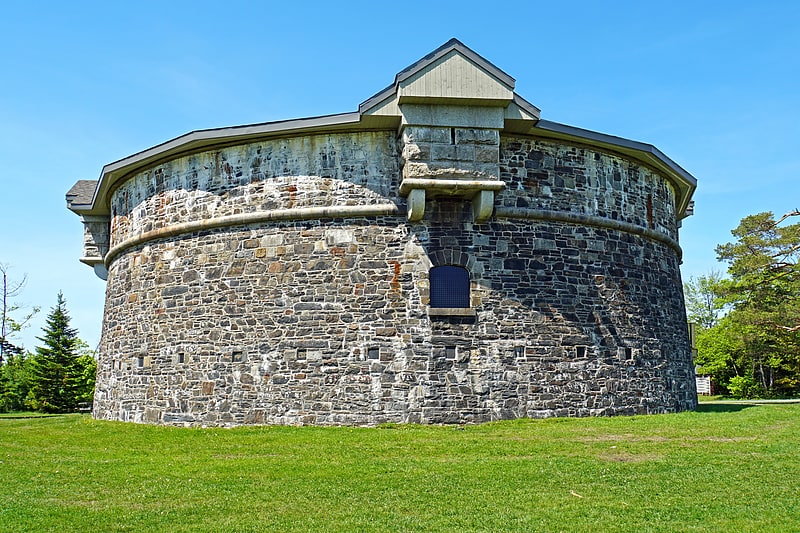
Historical landmark in Halifax, Nova Scotia. The Prince of Wales Tower is the oldest martello tower in North America and is located in Point Pleasant Park, Halifax Regional Municipality, Nova Scotia, Canada. It was built in 1796 by Captain James Straton and was used as a redoubt and a powder magazine. Restored, it was designated a National Historic Site of Canada in 1943.[28]
Georges Island Lighthouse
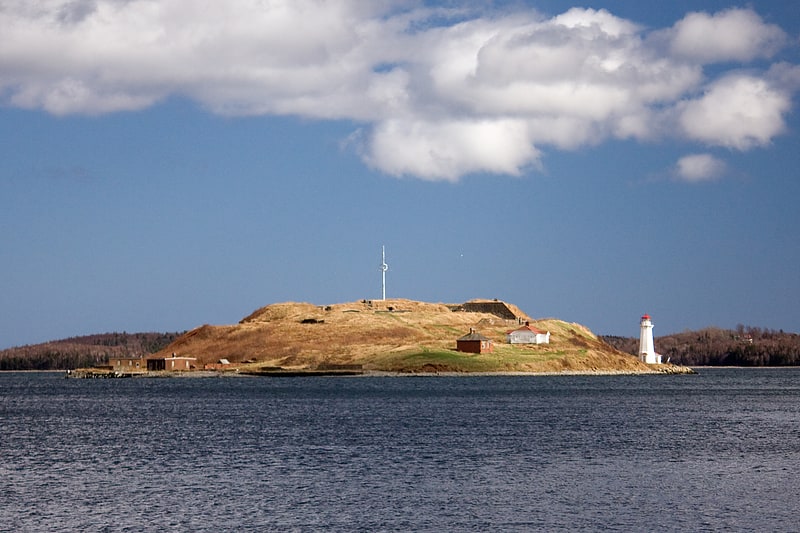
Lighthouse in Halifax, Nova Scotia. Georges Island Lighthouse is a prominent concrete lighthouse, built in 1917 on Georges Island, which replaced an earlier tower built in 1876. The light-keeper's house remains standing a few hundred feet to the north. The lighthouse is operated by the Canadian Coast Guard.[29]
Neptune Theatre
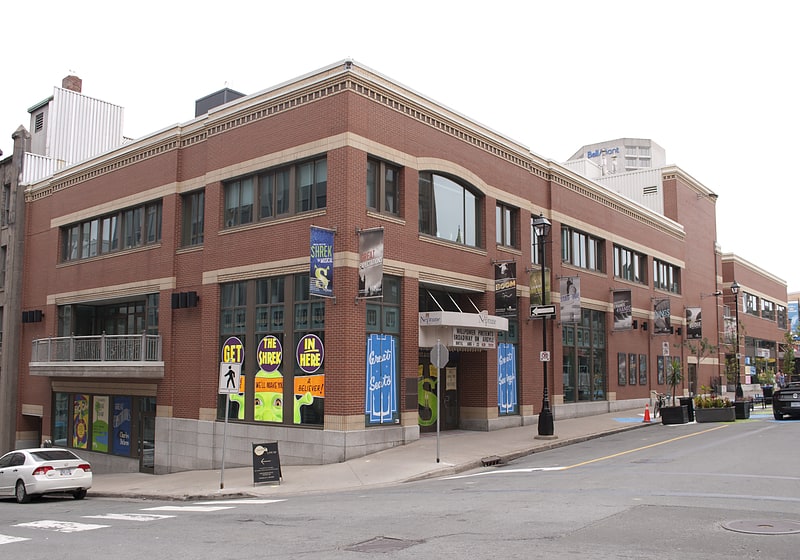
Theatre in Halifax, Nova Scotia. The Neptune Theatre is the largest professional theatre company in Atlantic Canada with a capacity of 458 and is located in downtown Halifax, Nova Scotia, Canada. It performs a mixture of new and classical plays. It is named after the play Théâtre de Neptune, which was performed at Port Royal, Nova Scotia as the first theatrical production in North America.
The Neptune was originally opened on the site of a former cinema in 1963 during Canada's drive to create regional theatres. Its first Artistic Director was Leon Major, later to become the Artistic Director of Boston Lyric Opera and Cleveland Opera. Its first President of the Board was local surgeon and CBC writer Dr. Arthur L. Murphy. The building was renovated in 1997 and now has two theatres and incorporates a theatre school.
From April to July 2007, the theatre staged its longest running production Beauty and the Beast. The play was performed 127 times, breaking a record previously held by Cats in 2004. Beauty and the Beast was directed by Ron Ulrich and starred Julie Martell as Belle and George Masswohl as the Beast. It also featured Rejean Cournoyer, Martha Irving, and Hank Stinson.
The most successful play of the 2008/2009 season was the comedy Skin Flick. This production marked the second time Neptune presented a mainstage play by Canada's most successful playwright, Norm Foster, after the 2008 production The Love List. The production was directed by Walter Learning.
For their final production of 2009, Neptune Theatre produced the Canadian Premiere of the stage adaptation of the Disney sensation High School Musical, directed by Canadian director/choreographer David W. Connolly. Starring the three actors from the hit children's series The Doodlebops, along with Aaron Kyte and Elena Juatco, the production premiered 17 April 2009 and broke several box office records for the theatre.[30]
Address: 1593 Argyle St, B3J 2B2 Halifax (South End)
Nova Scotia Museum of Natural History
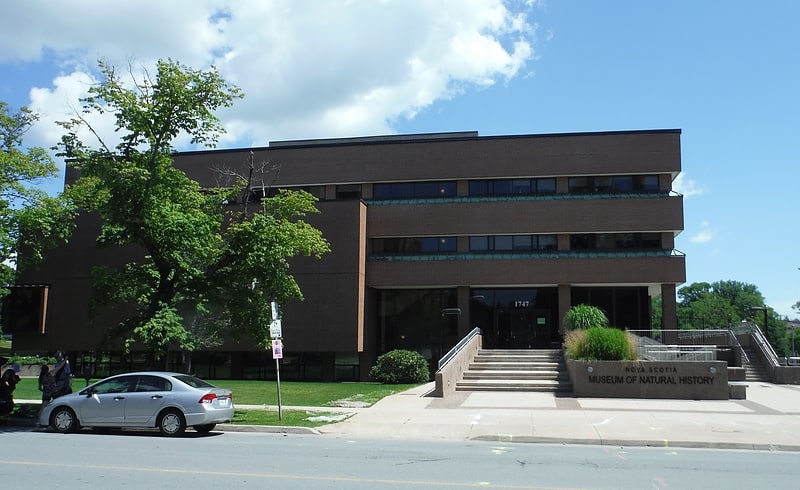
Museum in Halifax, Nova Scotia. The Nova Scotia Museum of Natural History, part of the Nova Scotia Museum, is located in downtown Halifax, Nova Scotia. The museum includes collections and exhibits concerning the natural sciences as well as artifacts of cultural significance to Nova Scotia.
Gus, the oldest known gopher tortoise, has lived at the museum for most of his life, after being purchased by a former curator of the museum, Donald Crowdis. The museum celebrated Gus's 97th birthday on August 11, 2019.[31]
Address: 1747 Summer St, B3H 3A6 Halifax (South End)
Dalhousie Arts Centre
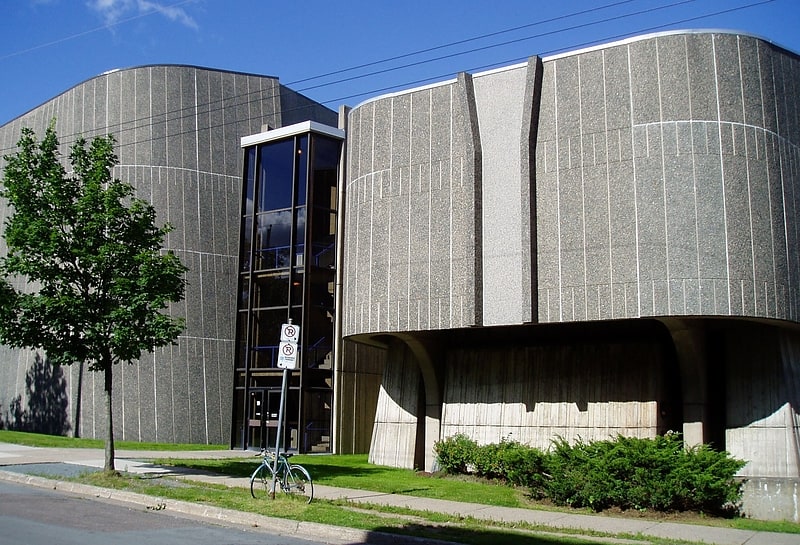
Art gallery in Halifax, Nova Scotia. The Dalhousie Arts Centre, at Dalhousie University in Halifax, Nova Scotia, contains a number of theatres, an art gallery, classrooms, and a sculpture garden. It remains the premier performing arts venue in Halifax. It was opened officially in November, 1971, and is also home to Dalhousie's Fountain School of Performing Arts.
The striking modern architecture was done by C.A.E. Fowler & Company (Charles Fowler) of Halifax, with significant contributions by the Japanese educator Junji Mikawa, who worked for Fowler at the time. The interior was mainly by Andy Lynch, who would later have his own firm in the city, and who drew inspiration from the work of Alvar Aalto.[32]
Address: Halifax, 6101 University Avenue, Halifax, Nova Scotia, B3H 4R2
Victoria Park
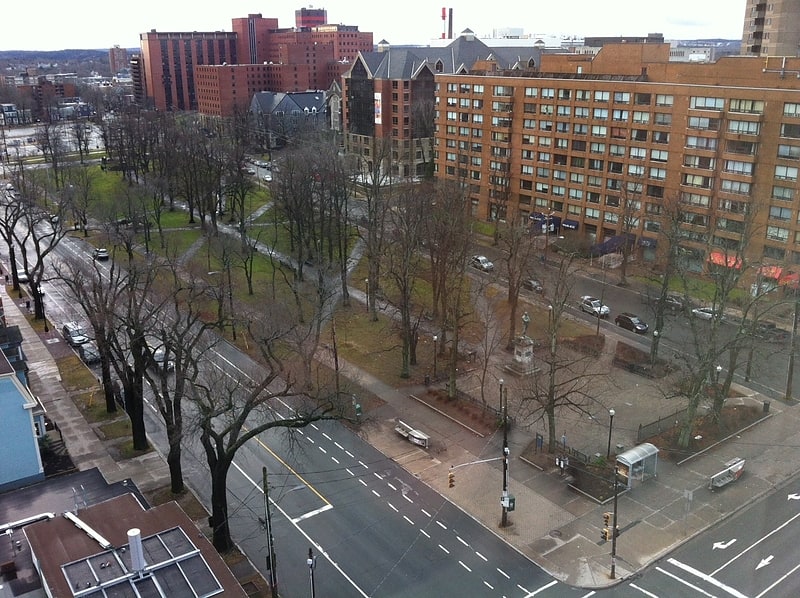
Park in Halifax, Nova Scotia. Victoria Park is an urban park on Spring Garden Road in Halifax, Nova Scotia, Canada, across from the Halifax Public Gardens.
The North British Society erected various monuments and statues: Robert Burns, Sir Walter Scott and William Alexander, 1st Earl of Stirling.
At the south end of the park Sidney Culverwell Oland created a fountain in memory of his wife Linda Oland (1966).[33]
Address: South Park St., Halifax (South End)
Discovery Centre
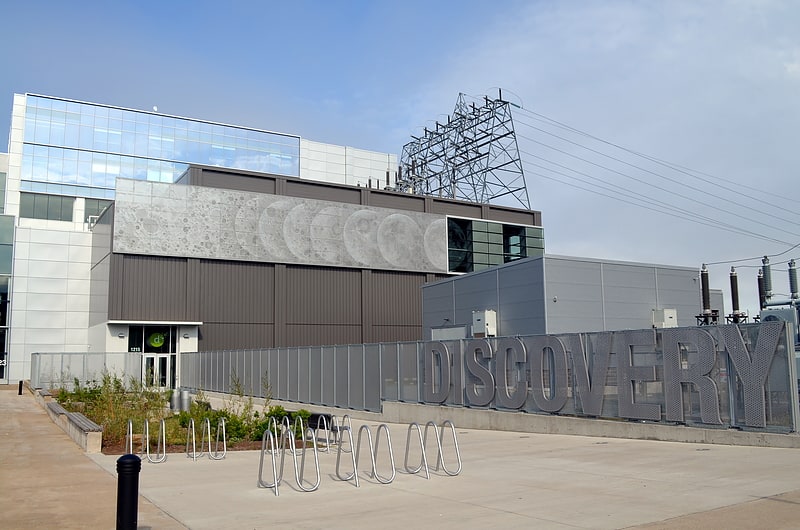
Museum in Halifax, Nova Scotia. Discovery Centre is an interactive science museum in Halifax, Nova Scotia. It is a not-for-profit charitable organization whose mission is to stimulate interest, enjoyment and understanding of science and technology.
In October 2010, the Discovery Centre announced that it would move from Barrington Street to the Halifax Seaport, adjacent to the new headquarters of Nova Scotia Power. The museum relocated there in 2017.[34]
Address: 1593 Barrington St, Halifax, NS, Halifax (South End)